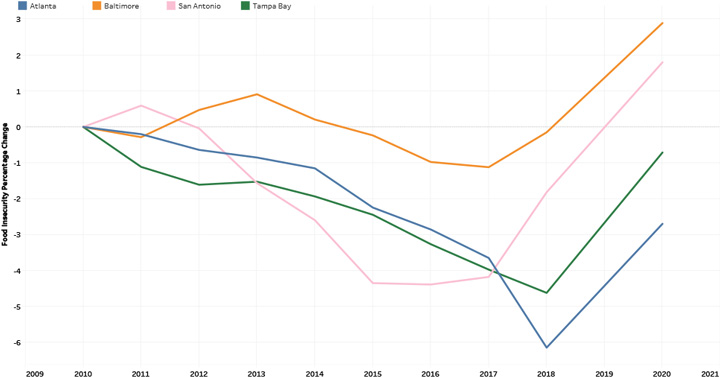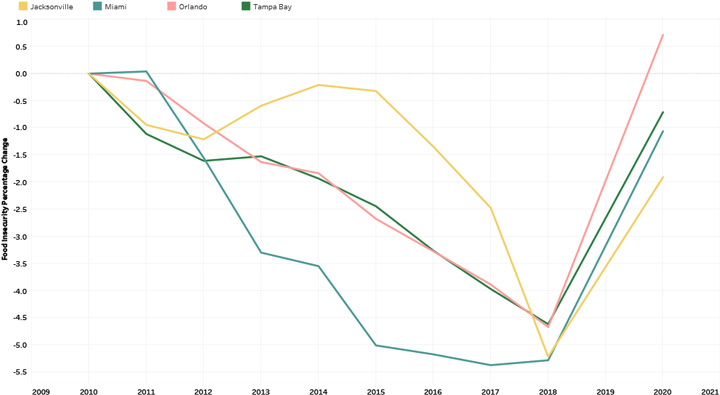2021 E-Insights Report
Food Insecurity
Food insecurity refers to U.S. Department of Agriculture’s measure of lack of access, at times, to enough food for an active, healthy lifestyle for all household members as well as limited or uncertain availability of nutritionally adequate foods. Food-insecure households are not necessarily food insecure all the time. Food insecurity may reflect a household’s need to make trade-offs between paying for important basic needs, such as housing or medical bills, and purchasing nutritionally adequate foods.
Researchers first looked at the relationship between food insecurity and its closely linked indicators (poverty, unemployment, homeownership, disability prevalence, etc.), doing so at the state level. They then used the coefficient estimates from this analysis, in conjunction with the same variables for every county and congressional district. Together, these variables can generate estimated food insecurity rates for individuals and children at the local level. Researchers gathered data for this by contacting Feeding America’s research team as it posts food insecurity rates for state and county levels. They aggregated the counties which belong to an MSA and added the populations and total food insecure persons in the county. Dividing the total food insecure persons with the population determines food insecurity rates. The 2020 values are the projected food insecurity rates calculated by Feeding America’s research team with its own methodology. Because 2019 data is not yet available, researchers calculated the percentage change with respect to 2010.
Food insecurity rates fell from 2010 through 2018 but began to sharply rise in 2018. Researchers project that food insecurity rates continued to rise through 2020, likely by a significant amount.
Insights
- All MSAs saw a steady decline in the food insecurity rates.
- Food insecurity rates are projected to continue to rise sharply.
- The Tampa Bay MSA’s food insecurity rate saw a drop over the years, However, it is projected to be back to 2010 levels by 2020.
- In Florida, Orlando's food insecurity rate is projected to be highest with its value coming in higher than the value in 2010.
Food Insecurity Percentage Change

Food Insecurity Change - Florida
